Introduction
A hydraulic press is a powerful and versatile machine that uses the principles of hydraulics to generate a compressive force. It is a machine you would typically find in a mechanical workshop, an auto repair shop, or an industrial setting. This guide will answer a question that often arises when you're considering acquiring one: What size hydraulic press do you need? To answer this question, we will delve into the world of hydraulic presses, learn how they work, and understand the factors that will help you choose the right one for your needs.
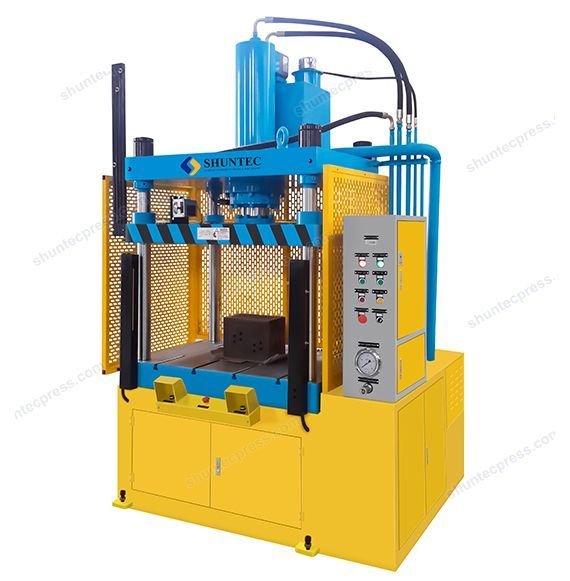
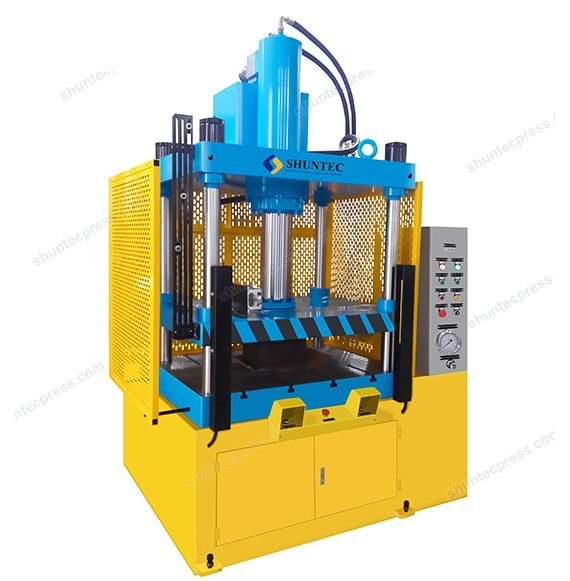
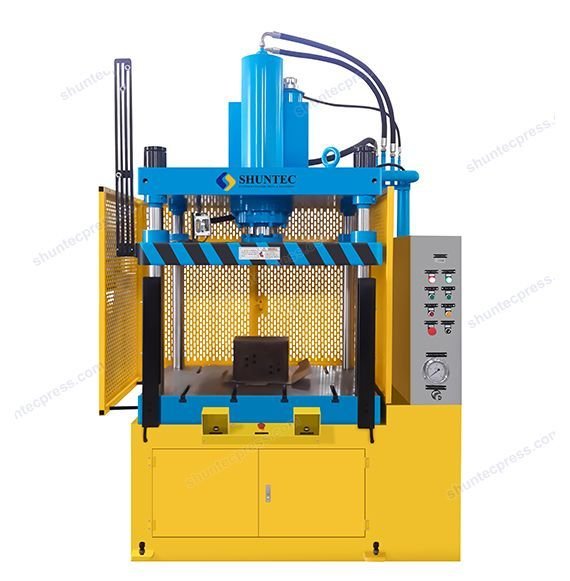
Understanding Hydraulic Presses work
The principle that powers a hydraulic press machine, known as Pascal's Law, states that when pressure is applied to a fluid in a closed system, that pressure is transmitted equally in all directions. In simpler terms, a hydraulic press uses a hydraulic cylinder and a hydraulic cylinder to create a force that can be much larger than the force initially applied.
The hydraulic cylinders is a tube containing a piston that can move freely. When the hydraulic cylinder forces hydraulic fluid into the cylinder, the fluid pushes against the piston, causing it to move and generate force. The hydraulic lines, typically made of reinforced rubber or steel, are what carry this hydraulic fluid between the pump and the cylinder.
There are numerous types of hydraulic presses, each designed for specific tasks. The most common types include the shop press, the H frame press, and the C frame press.
A shop press, also known as an arbor press, is one of the smaller types of hydraulic presses. It's compact, making it an excellent choice for a small machine shop or a home garage where space is a premium.
H frame presses are known for their sturdy steel frame, resembling an 'H', which can handle heavy-duty tasks. The H frame provides stability and allows for higher force capacities, making it suitable for industrial purposes.
C frame presses have a 'C' shaped frame that provides open access to the press cylinder and work area. This makes them ideal for tasks like bending material, pressing bearings, or assembling parts, where access from three sides may be needed.
In addition to these, there are also specialized hydraulic presses like forging presses, which are used in the metalworking industry to shape metal.
Choosing the Right Hydraulic Press
When you're pondering over the question, "what size hydraulic press do you need?", there are several factors you need to consider.
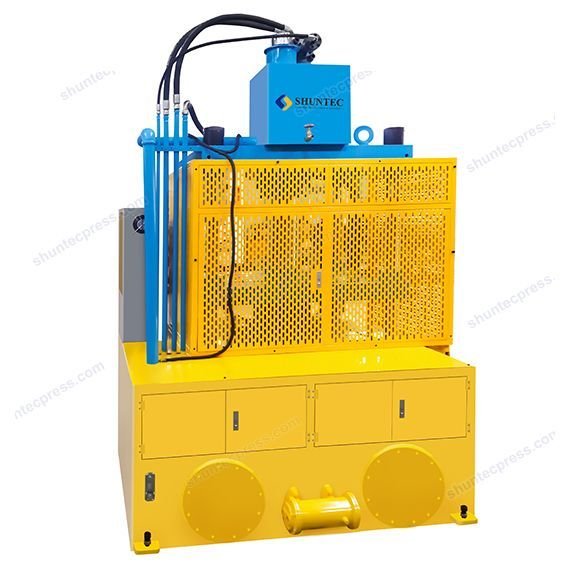
Intended Use
The type of work you plan on doing with your hydraulic press is one of the most crucial factors in determining the size of the press you need. If you're working in an automotive shop, you might need a press for tasks like pressing bearings, U joints, ball joints, or wheel bearings. In such a case, a press with a tonnage of 20 tons or more might be required.
If, on the other hand, you're running a machine shop where you're primarily using the press for tasks such as bending material or pressing in smaller components, a smaller press, like a 10 or 12-ton press, might suffice.
Required Tonnage
Tonnage refers to the amount of force that a hydraulic systems can generate, measured in tons. Determining the required tonnage for your work can be a bit tricky, but it is crucial to ensure that you choose a press that can generate enough force for your needs without being overkill.
To calculate the required tonnage, you need to know the maximum force you will need for your tasks. For example, if you're pressing bearings or U joints, the force needed will be different than if you're bending thick sheets of metal.
Also, consider the materials you'll be working with. Harder materials will require more force than softer ones. In general, the larger the workpiece and the harder the material, the more force you will need.
For example, if you're pressing a bearing with a 2-inch diameter into steel, you may need a force of around 5 tons. If you're bending a 1-inch thick piece of steel over a 1-foot length, you might need a press with a capacity of over 50 tons.
Space Available
The size of your workspace is another critical factor to consider. H frame presses and larger C frame presses can take up quite a bit of space, whereas a smaller arbor press or a smaller C frame press could be more appropriate if you're working in a smaller shop.
Budget
Hydraulic presses can range from a few hundred to tens of thousands of dollars, depending on the size, the brand, and the features. Before you start shopping, it's essential to have a clear understanding of how much money you're willing to invest in a hydraulic press.
In general, larger presses will cost more than smaller ones. However, the price can also vary depending on the features of the press. For instance, a press with automatic cycling, dwell timers, or other advanced features will likely cost more than a basic press.
Specific Uses of Hydraulic Presses
Different sizes of hydraulic presses are suited to different tasks. In this section, we'll discuss what you can do with hydraulic presses of various sizes.

What Size Press for Automotive Work?
Automotive work often involves pressing bearings, U joints, ball joints, and wheel bearings. For these tasks, you'll typically need a press in the range of 20 ton to 50 tons.
A 20-ton press is a versatile machine, capable of handling a range of automotive tasks. For example, it can be used for pressing bearings and U joints, which require a significant amount of force. Additionally, it can also handle tasks like straightening bent metal parts, or even forming and shaping metal.
If your tasks involve heavier components or more substantial materials, you might need a larger press. For instance, if you're working with large truck parts or heavy machinery, you might need a press with a capacity of 50 tons or more.
What is a 20-ton Hydraulic Press Used For?
A 20-ton hydraulic press is a versatile machine that can handle a range of tasks. With 20 tons of force, it can press bearings, U joints, and other automotive parts. It can also be used for bending and forming metal, as well as for straightening bent parts.
In addition to these tasks, a 20-ton hydraulic press can also be used in a machine shop for tasks like broaching, where you need to cut a piece of metal to a specific shape.
What Can a 10-ton Hydraulic Press Do?
A 10-ton hydraulic press might not have the same force capacity as a larger press, but it's still a highly versatile machine. It can be used for pressing smaller bearings, U joints, and other components. It can also be used for tasks like forming and bending smaller pieces of metal.
Additionally, a 10-ton hydraulic press is often a good fit for a smaller machine shop, where space is at a premium. Despite its smaller size, it can still handle a wide range of tasks, making it a valuable addition to any shop.
What Can You Do With a 12-ton Hydraulic Press?
A 12-ton hydraulic press is slightly more powerful than a 10-ton press, allowing it to handle slightly larger tasks. Like the 10-ton press, it can be used for pressing bearings and U joints. However, it can also handle slightly larger or harder materials.
In addition to pressing tasks, a 12-ton press can also be used for tasks like forming and bending metal, as well as broaching. It's a good fit for a small to medium-sized machine shop, where a balance between force capacity and space-saving is required.
Cost of Hydraulic Presses
As mentioned earlier, the cost of a hydraulic press can vary significantly based on its size, brand, and features.
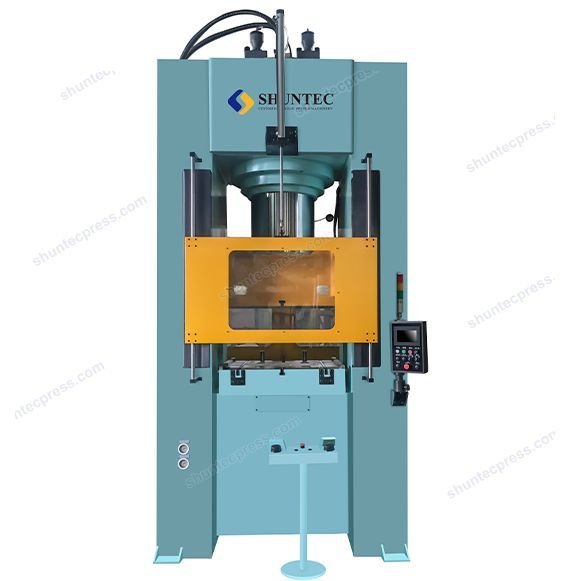
Smaller presses like a 10 or 12-ton press can cost anywhere from a few hundred to a few thousand dollars. These presses are often a good fit for a small machine shop or a home garage, where budget and space might be limiting factors.
Mid-sized presses like a 20 or 50-ton hydraulic press can range from a few thousand to over ten thousand dollars. These presses are more suitable for a professional shop or an industrial setting, where they're likely to be used more frequently and for heavier-duty tasks.
Larger presses, like a 250-ton press, can cost tens of thousands of dollars. These presses are generally used in industrial settings, where they're required for heavy-duty tasks.
However, it's important to note that the initial cost of the press is not the only expense. There's also the cost of maintenance, which includes the cost of hydraulic fluid, replacement parts, and potentially the cost of professional servicing. Additionally, if the press uses electricity to power the hydraulic pump, there will be ongoing energy costs to consider.
It's also worth noting that while the cost can be a significant factor, it shouldn't be the only one. A cheaper press might not have the force capacity or the durability to handle your tasks, which could end up costing you more in the long run.
It's important to strike a balance between cost and quality. An investment in a good press can save you time and money in the long run, by improving efficiency and reducing the likelihood of breakdowns.
Advantages and Features of Hydraulic Presses
Hydraulic presses come with a range of features and advantages that make them a valuable addition to any machine shop or industrial setting.
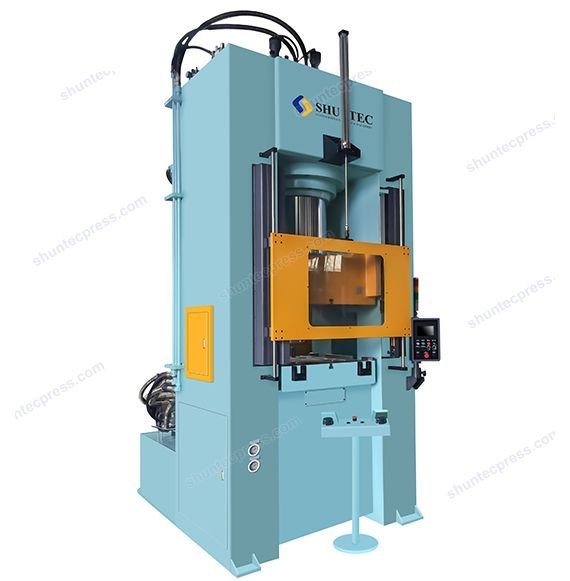
Automatic Cycling and Dwell Timers
Some hydraulic presses come with features like automatic cycling and dwell timers, which can greatly improve efficiency. Automatic cycling allows the press to continue working without constant manual input, while dwell timers allow you to set a specific amount of time for the press to apply force, which can be particularly useful for tasks like forming or shaping metal.
Safety Features
Safety is paramount when working with machinery, and hydraulic presses are no exception. Many hydraulic presses come with safety features like light curtains, which stop the press if something or someone interrupts the light beam. Other safety features can include safety blocks, which prevent the press from accidentally descending when maintenance work is being done, and pressure relief valves, which prevent the pressure from exceeding safe levels.
Space Saving
Despite their power and versatility, hydraulic presses can be surprisingly compact. For instance, an arbor press, which is a type of hydraulic press, is often small enough to be used on a workbench. Even larger presses like H frame or C frame presses are often designed to be as space-efficient as possible.
Movable Bolster
A movable bolster is a feature that allows the work surface of the press to be moved in and out, allowing for easy loading and unloading of workpieces. This can be particularly useful for heavier workpieces, or when precision placement is required.
Conclusion
When it comes to answering the question, "what size hydraulic press do you need?", the answer depends on a range of factors. Your intended use, the required tonnage, the space you have available, and your budget all play a part in determining the right size of hydraulic press for your needs.
Hydraulic presses are powerful and versatile machines, capable of handling a wide range of tasks. Whether you're running an automotive shop, a machine shop, or an industrial setting, there's likely a hydraulic press that's a perfect fit for your needs.
Remember, a 10-ton press can handle a variety of tasks, from pressing smaller bearings to bending smaller pieces of metal. A 12-ton press has a slightly higher capacity, making it suitable for slightly larger or harder materials.
For automotive tasks such as pressing bearings, U joints, ball joints, or wheel bearings, a 20 to 50-ton press might be more appropriate. These presses can also handle tasks like straightening bent parts or forming and shaping metal.
If you're working on an industrial scale, with large truck parts or heavy machinery, you may require a press with a capacity of 50 tons or more.
In terms of cost, smaller presses are more budget-friendly, while larger presses are more expensive but offer higher force capacities and more features.
Always remember to consider safety, space, and features like automatic cycling, dwell timers, and movable bolsters when selecting a hydraulic press. With careful consideration, you can find the perfect press that offers the right balance of size, power, and price for your specific needs.
So, while choosing a hydraulic press might seem daunting initially, a clear understanding of your requirements and the options available will make the task significantly easier. Remember, the key to finding the right hydraulic press is to understand your needs and match them with the capabilities of the press. With the right hydraulic press in your shop, you'll be well-equipped to take on a multitude of tasks, improve your efficiency, and elevate your operations to a new level.



